Greetings All,
Empire Belt RR Defined and Operations Part 2
In our last blog entry we examined and defined the role of the Empire Belt RR as a switching district railroad that services rail customers within Empire City, NY and how it interacts with the parent road and the national rail system.
Today we'll take a look at trying to better organize the movement of freight cars throughout the layout in a more prototypical manner. I'm currently setting up my freight operations by dividing the freight car fleet into some basic categories. For today we'll focus on the Assigned Service Cars, Ping Pong Cars and General Freight Pool Cars.
Assigned or Dedicated Pool Service
Prototype railroads assigned freight cars to freight pools serving various large industries like auto parts manufacturers and appliance manufacturers to name a couple whether or not the industry was served by them.
APRR Boxcar 4160 in Assigned or Dedicated Pool Service
Lets catch up with APRR boxcar 4160 that is in assigned or dedicated pool service to the EBRR. In part one of this series the 4160 was loaded at Drywell Inks with 55 gallon drums of ink for the Lightning Press in the Terminal Warehouse & Cold Storage complex.
After loading at Drywell Ink the 4160 was interchanged with the Penn Central at Terminal Yard and was delivered to Lightning Press.
Once the car is unloaded and made empty it will head back to the EBRR North Side Yard in Empire City, NY. These instructions are on the boxcar and the empty car slip in the car card.
Upon being returned to North Side Yard the EBRR freight agent will review his empty car requests and select freight cars suitable for the loading requirements of the local shipper(s). Today the AP 4160 will be readied for movement to Walsh Steel Wool Products to fulfill an empty car request.
Walsh Steel Wool has two shipments needing to be moved to their respective consignees. The first is American Hardware in Bedford Park.
The second shipment is consigned to Gotham Builders in Long Island City, NY, an off layout industry served by the LIRR.
Once the car is unloaded and made empty it will head back to the EBRR North Side Yard in Empire City, NY. These instructions are on the boxcar and the empty car slip in the car card.
Upon being returned to North Side Yard the EBRR freight agent will review his empty car requests and select freight cars suitable for the loading requirements of the local shipper(s). Today the AP 4160 will be readied for movement to Walsh Steel Wool Products to fulfill an empty car request.
Walsh Steel Wool has two shipments needing to be moved to their respective consignees. The first is American Hardware in Bedford Park.
The second shipment is consigned to Gotham Builders in Long Island City, NY, an off layout industry served by the LIRR.
How Does the APRR Profit
While the AP 4160 is on Empire Belt RR property the EBRR pays the APRR a per diem (daily charge). The AP 4160, a 40' boxcar, is more suited for the smaller sidings in Empire City while it is now too small for most shippers served by the APRR. The agreement between the EBRR and APRR provides a steady income for the APRR and provides the EBRR with a good serviceable freight car to meet its shippers needs without making any large capital investments.
Flexibility is the Key
Using empty car requests from local shippers allows for flexibility in where and when a car gets loaded and where it will be delivered. Having several such cards allows for the agent and yardmaster to meet the needs of the local industries. Remember there is no need to send an empty car to an industry with a full siding until such industry is ready to receive such empty.
Getting Loaded Freight Cars Onto The Layout
By necessity some groups of foreign road freight cars that come onto the layout have been loaded by off layout shippers. The consignees are either on layout or being run thru to an off layout industry. Pairing up origins and destinations is part of the operational upgrades that are underway.
Ping Pong Anyone?
Privately owned specialty cars like this Thrall All-Door boxcar belonging to the Masonite Corporation are loaded off layout and deliver their products to an on layout customer or run thru to interchange with the LIRR. Once empty it is to be sent back to Laurel, Miss. as noted on the car.
TPFX 5510, the first PCCM freight car, is a privately owned Triangle Pacific boxcar. This company specializes in wood products and should be forwarded back to the BCOL RR in North Vancouver as stated on the left side of the door.
MDW 1192 and companions are another type of car that ping pongs back and forth. The car is owned by the Minnesota, Dakota & Western Railway which is a four mile short line RR. The MDW was controlled by the Boise Cascade Plant in International Falls, MN. Lettering on the car states it is for restricted loading and to see the equipment register. For ease of operation this is another car that arrives loaded and heads off layout empty.
WCRC center beam flatcars 9226 and 9232 belong to the Washington Central Railroad Company and are assigned to the Cascade Warehouse in Salem, Oregon. This is another example of a car that ping pongs back and forth bringing loads and heading for home rail empty.
Handling of General Freight Car Pool Empties
The basic concept of the ARR car rules are that when a car is made empty on a foreign railroad that car is to be sent back empty to the forwarding railroad where that car entered the system under load or get loaded for movement in the direction of the owning road. The exception being if the connection with the forwarding railroad is in the opposite direction of the owning road.
SP boxcar 653003 is considered part of the general freight car pool. With no current load available heading west from the layout the car will depart empty from Terminal Yard to minimize per diem charges.
The BCOL boxcar has traveled a long way to bring freight to the layout. It may be traveling a long way empty back to BCOL at Vancouver, BC following the AAR rules. This car could be held for loading but when no loads are available the car needs to be moved back to the BCOL RR.
Reducing Imaginary Per Diem Charges
Remember your model railroad is responsible for the per diem charges when foreign road cars are on your layout. Empties like the above cars that cannot be loaded on the layout are prime candidates for expedited movement towards their home rails and off the layout. Specialty cars earn an even higher per diem so keep them moving!!!
Handling of General Freight Car Pool
Empties Held for Loading
According to AAR car rules empty foreign road cars in the general freight car pool that have been made empty on the layout can be held for loading providing that the freight car heads in the general direction of the owning road.
Travels of Chicago Burlington & Quincy 50' Boxcar
CB&Q 50' boxcar 46662, formerly in automobile service has had its end doors welded shut and been added to the general freight car pool. We catch it delivering a load from on layout shipper Montgomery Ward to All City Storage in Bedford Park in waybill cycle 3.
Now empty the CBQ 50'er has been moved to Bedford Park Yard where the hold has been placed on it by the local freight agent according to hold slip numbered 3A.
American Hardware Supply in Bedford Park has requested a 50' boxcar for a load heading west and the CB&Q car fits that bill nicely.
The CB&Q boxcar gets moved to American Hardware Supply where it will be loaded with bulk hardware for Drake Hardware Supply in Burlington, Iowa. The car will be forwarded to Terminal Yard once loaded and sent off layout towards Selkirk and onto Iowa.
After being moved to Berk the SCL car is loaded with food containers for a Jacksonville, FL consignee. It will head off layout towards Selkirk and Florida.
American Hardware Supply in Bedford Park has requested a 50' boxcar for a load heading west and the CB&Q car fits that bill nicely.
The CB&Q boxcar gets moved to American Hardware Supply where it will be loaded with bulk hardware for Drake Hardware Supply in Burlington, Iowa. The car will be forwarded to Terminal Yard once loaded and sent off layout towards Selkirk and onto Iowa.
CBQ Car Movement Summary
This four cycle waybill is designed for the CB&Q boxcar to arrive on the layout after being loaded at an off layout industry. It will move throughout the layout as it cycles thru the car slips and waybill until side four where it heads off layout. The waybill be then be turned to side one and the car is ready to come back whenever I get around to pulling it out of the box.
Travels of Seaboard Coast Line 50' boxcar
Empty SCL boxcar 28606 has a hold for local loading slip placed on it by the Terminal Yard freight agent.
SCL 50' boxcar 28606 is tabbed to fulfill an empty car request from Berk Enterprises in nearby Bedford.After being moved to Berk the SCL car is loaded with food containers for a Jacksonville, FL consignee. It will head off layout towards Selkirk and Florida.
We are in compliance with the Freight Car Rules!
The above two examples are nice and neat and in compliance with the AAR car rules. But things aren't always so neat!!! When a freight agent needs a boxcar he needs a boxcar!!!
We are not in compliance with the Freight Car Rules!
RDG boxcar 115455 fulfilled an empty car request from Consolidated Grocery Distributors (blue card behind waybill) and has been loaded with groceries for off layout Bohack in Bushwick, NY which is served by the Long Island RR. Last I checked this was in the opposite direction of Pennsylvania!
So what gives?
Car rule compliance hovered around 65% for the nations railroads during the 60s. Again, when a freight car is needed to satisfy a shippers needs it is needed.
Keeping 65% or even 50% of the freight car fleet going in the right directions whether empty or loaded can be a challenge to both 1:1 scale and model railroads. 1:1 railroads who routinely abuse the car service rules could find themselves removed from the interchange pools which would be very problematic.
Final Thoughts and Comments
Researching and adding more prototypical freight car operations for the layout has become almost a hobby itself. During model railroad operations moving freight cars around the layout in a more prototypical manner adds another level of realism to the op session and has been very rewarding.
Coming Soon
Next installment we'll take a closer look at the Increased Per Diem boxcars mentioned in part one and take a look at the Railbox box cars that started to appear in the early to mid 1970s.
Thanks for reading!!!
See you soon!!!



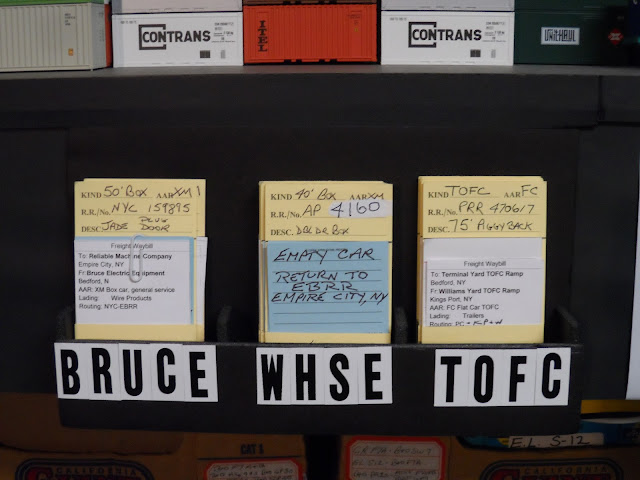


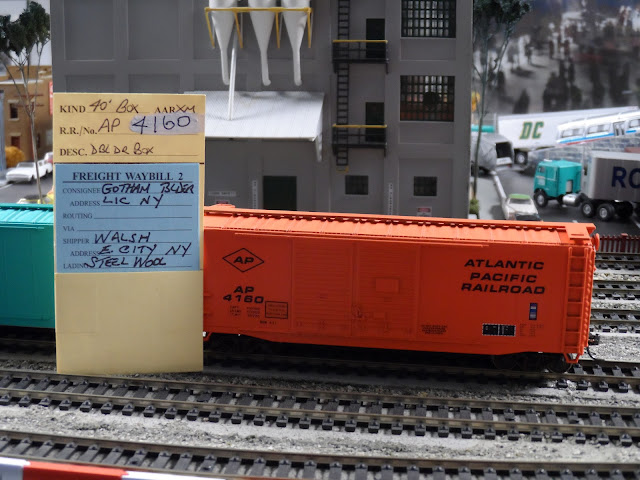









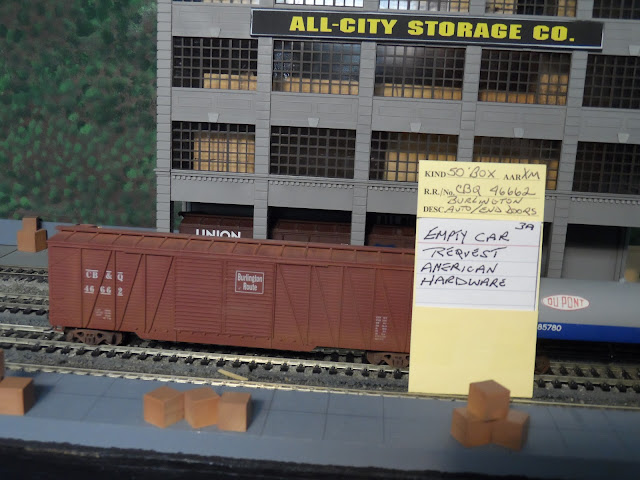

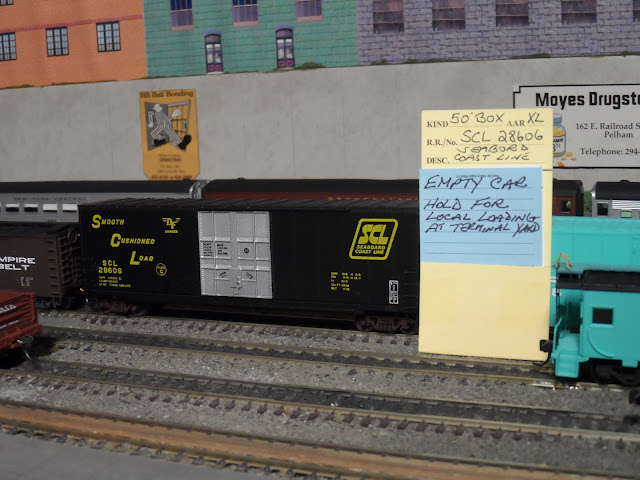
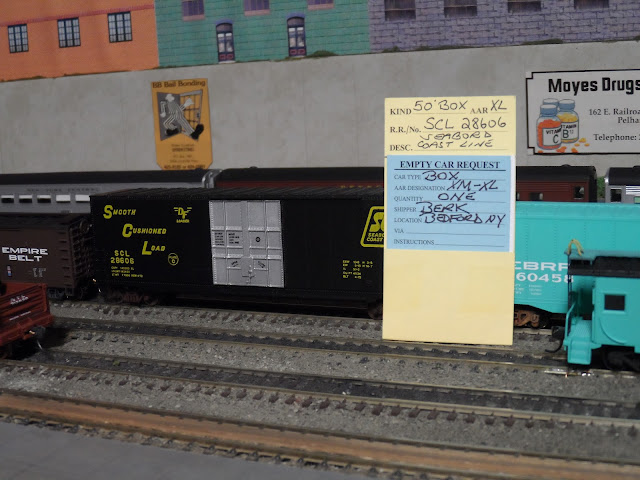


A very interesting read about freight cars, movements and more. Actually a history lesson of railroading profitability. The way you use the freight cars in a leased manner, interchange and ‘Ping Pong’ adds to realism on your layout.
ReplyDeleteYou’ve added some great features to the way you move cars and as you stated, having them cycle on the layout adds to a more prototypical operational scenario.
Looking forward to the next chapter on the NYCTL!
Thank you very much of the compliments Sir Neal!!! And thank you for allowing several APRR boxcars to be assigned to the EBRR freight car pool.
DeleteThis post reads like an article from some of my favorite railroading magazines! Great job conveying this information in an interesting and easily understandable manner. I especially enjoyed the examples in which we follow a car through some of its forwarding moves. I wasn’t aware that Car Rule Compliance during our preferred modeling era was around 65%. I guess folks did what they felt was needed to keep the freight moving! I can see how you’ve developed an increased appreciation of the rules and procedures and how it enhances your enjoyment of modeling the operations. Very cool stuff!
ReplyDeleteThank you very much Ralph!!! This is high praise indeed!!!
Delete